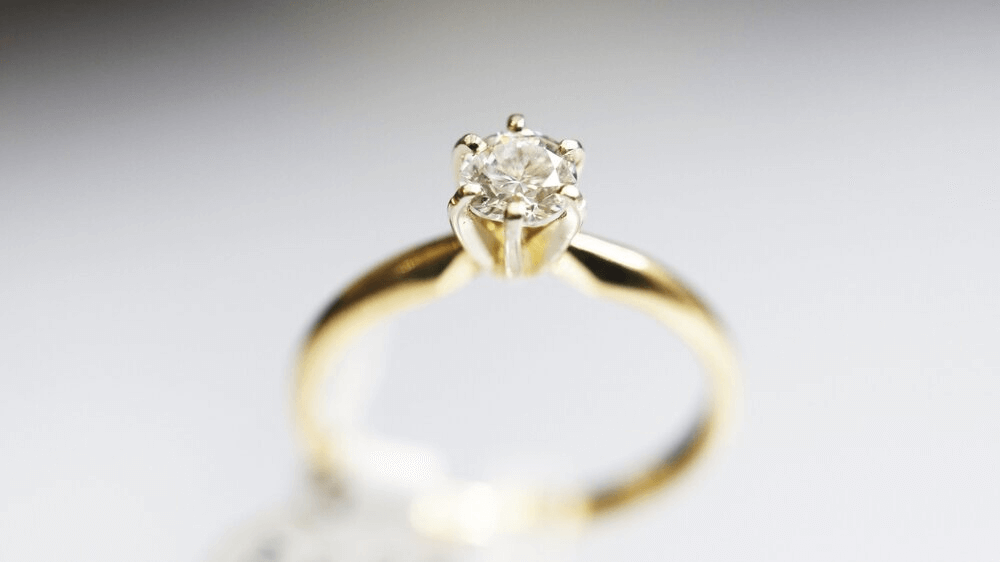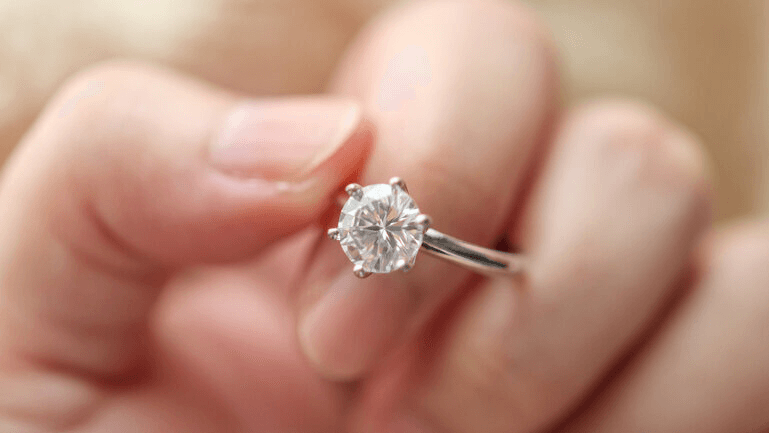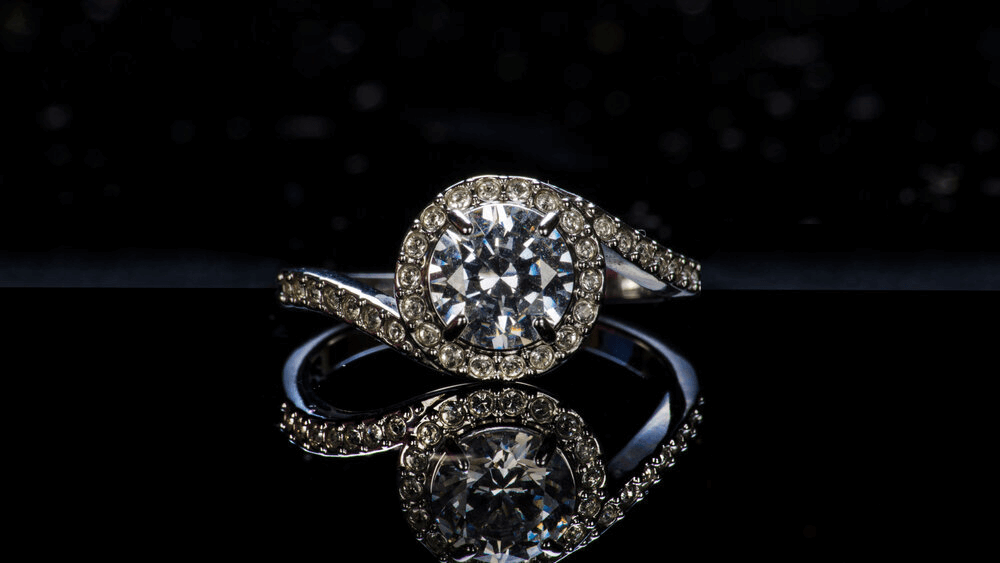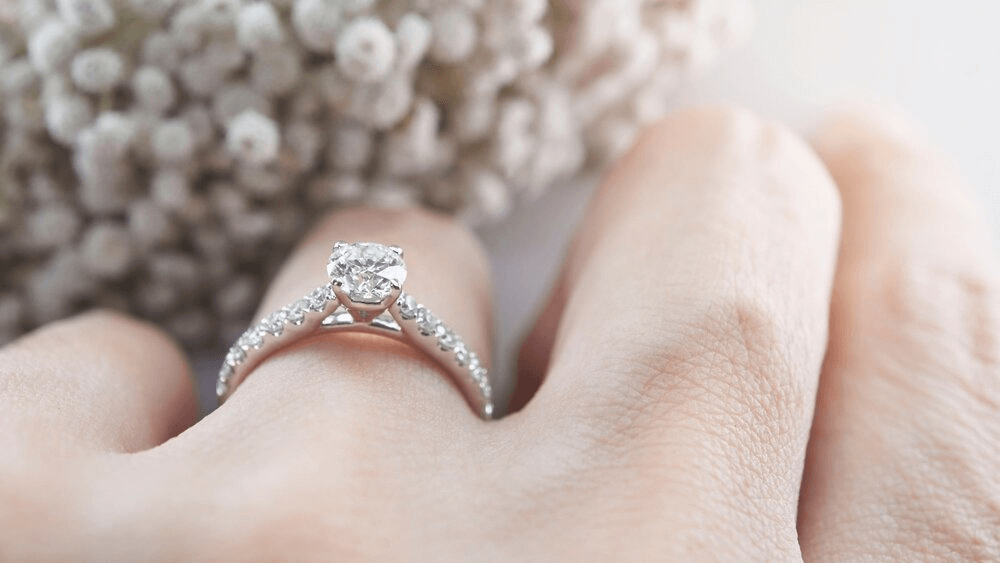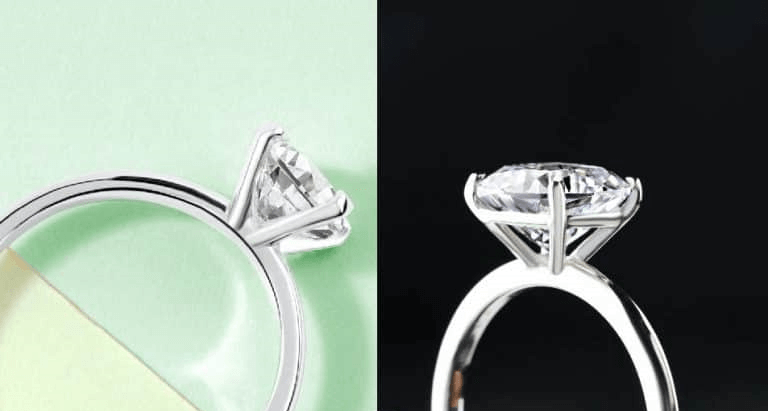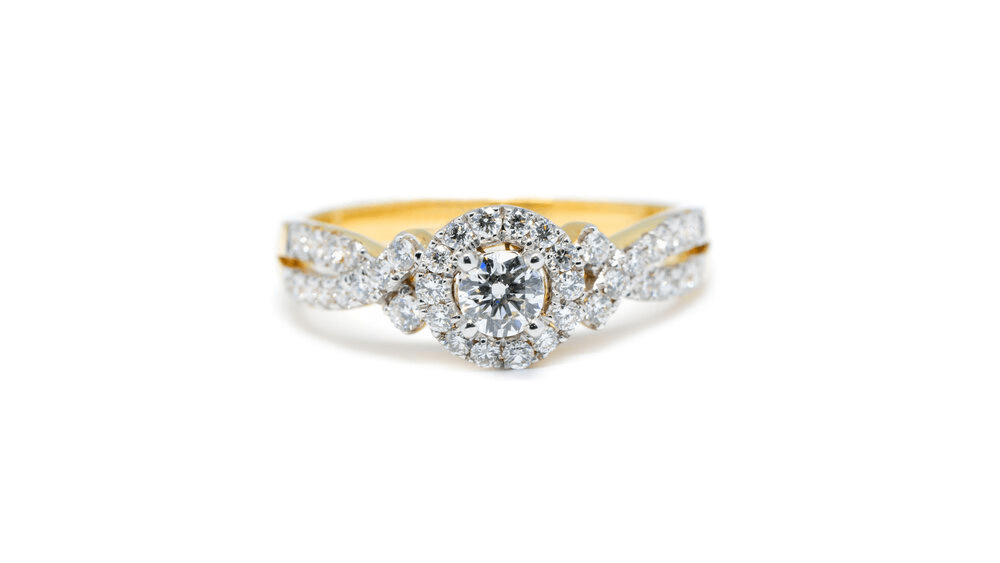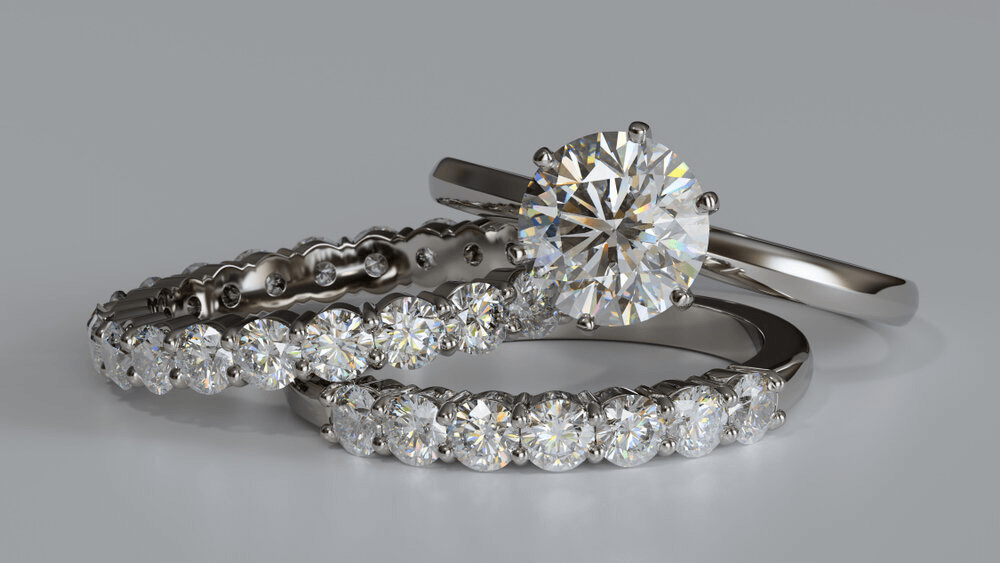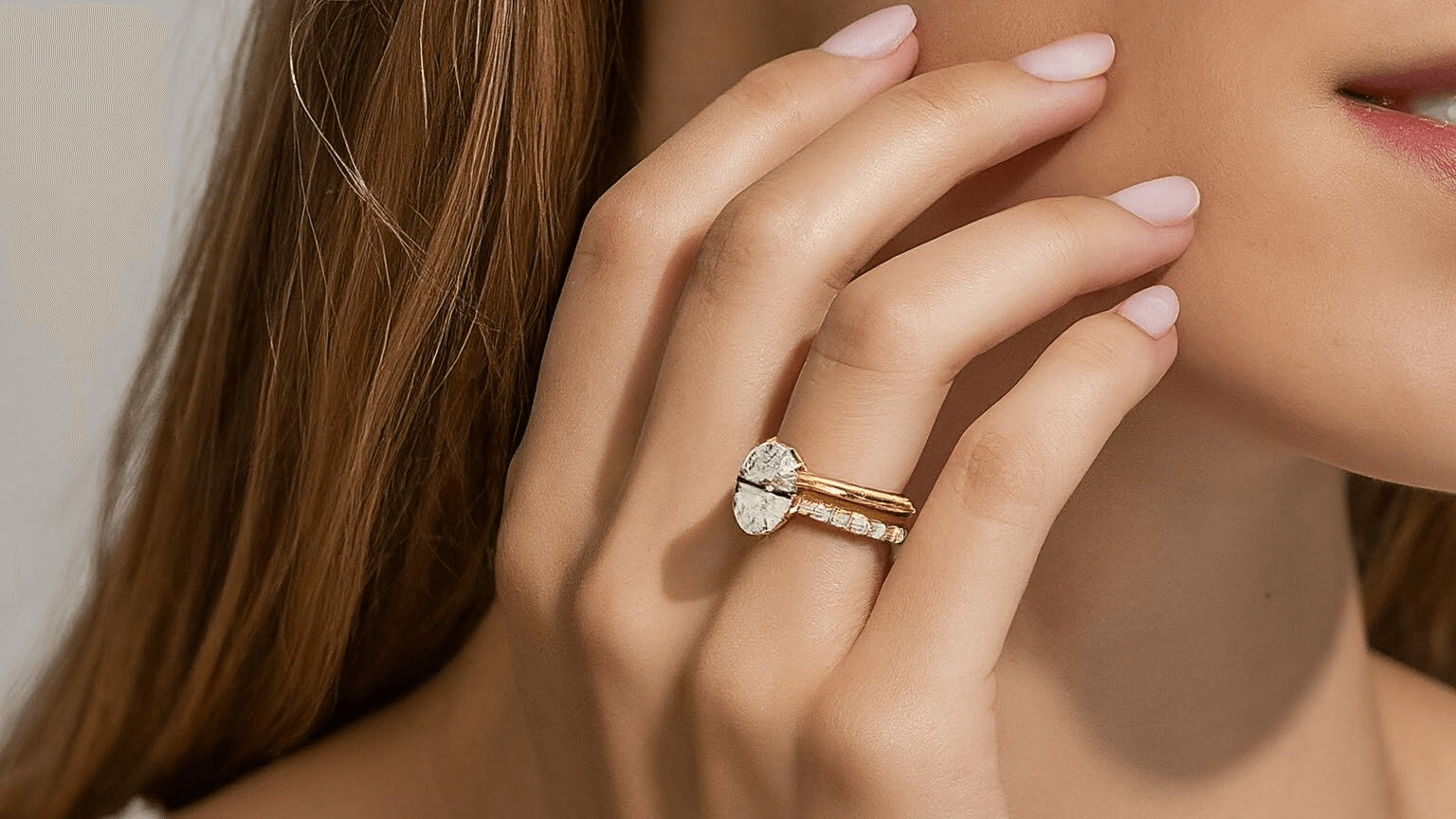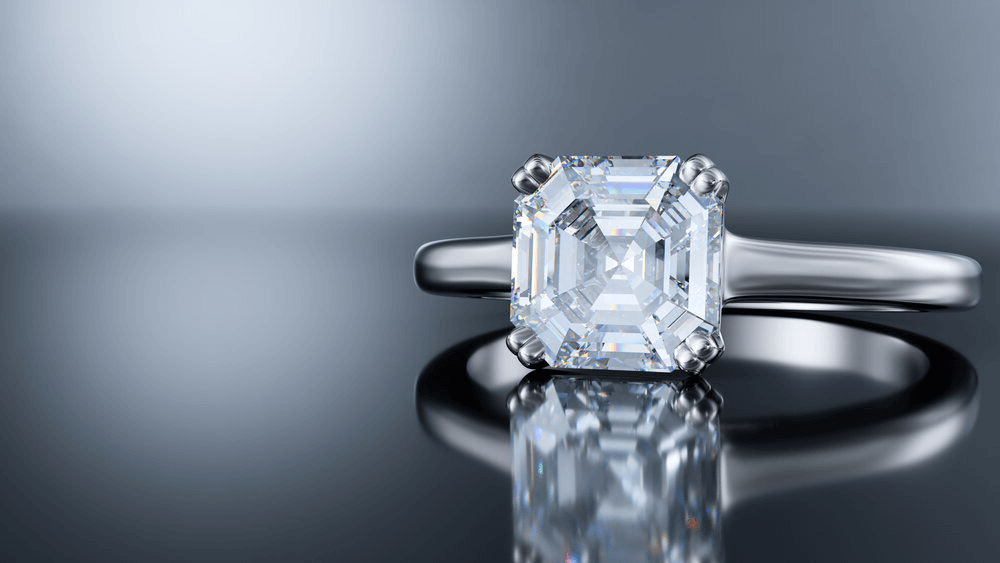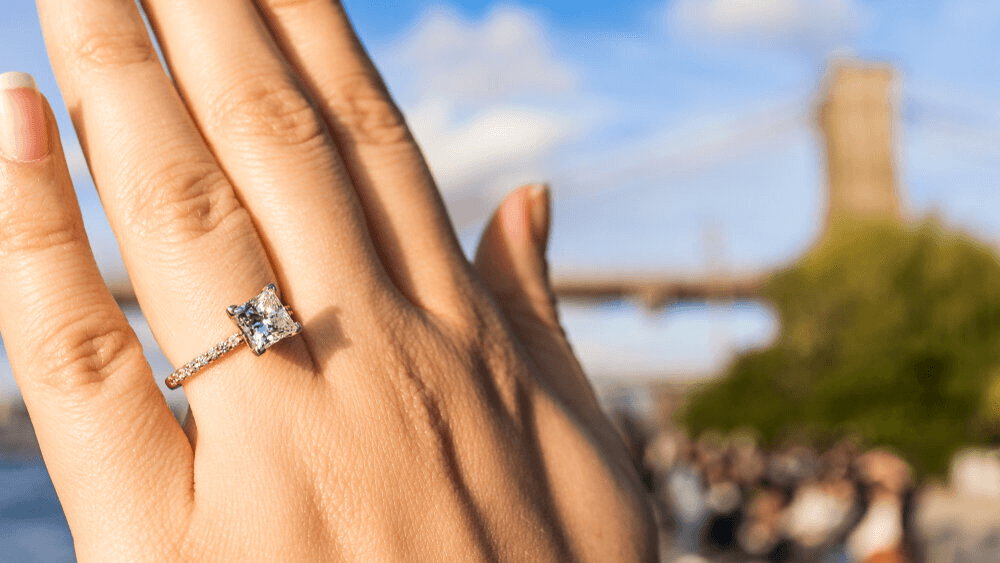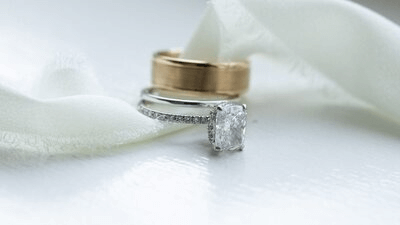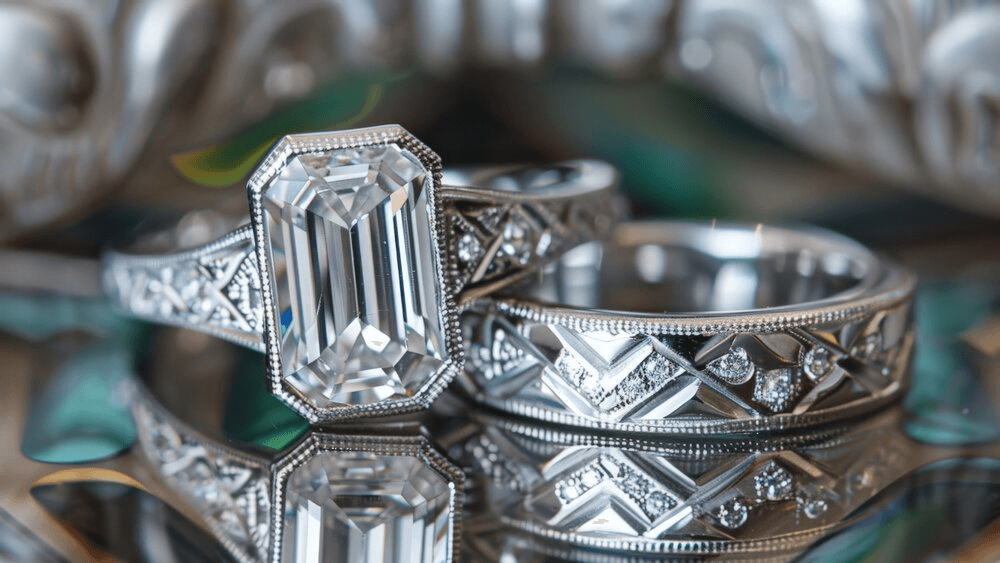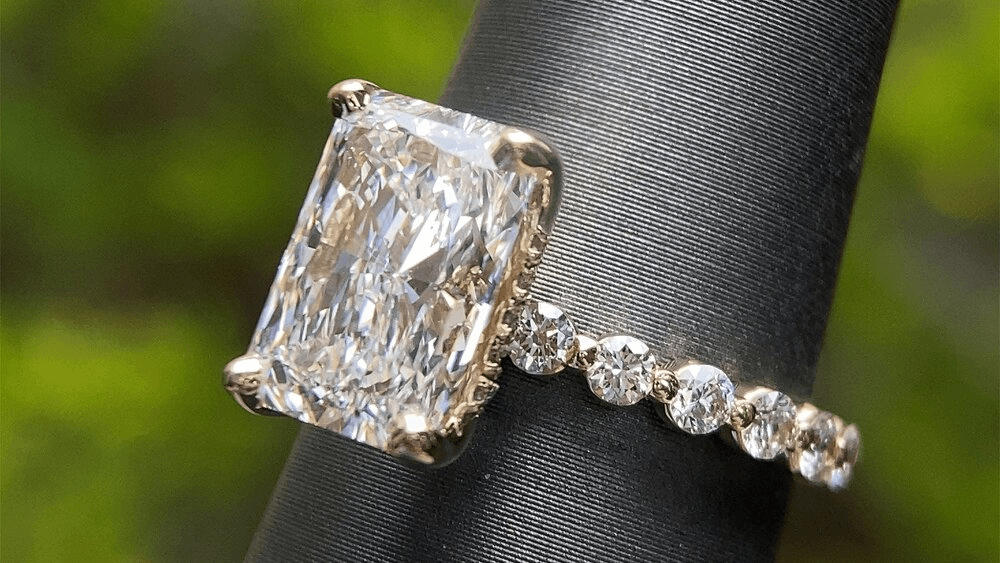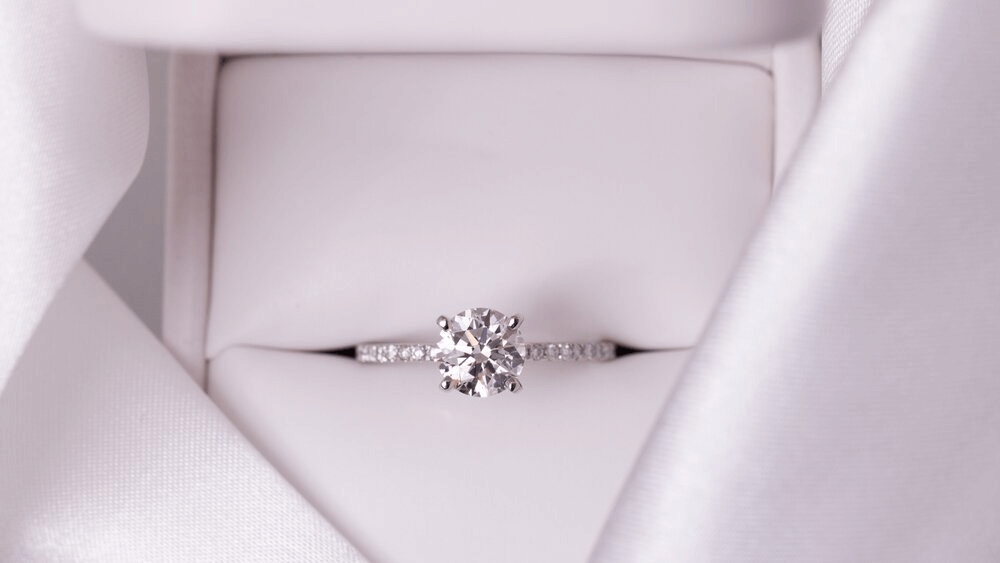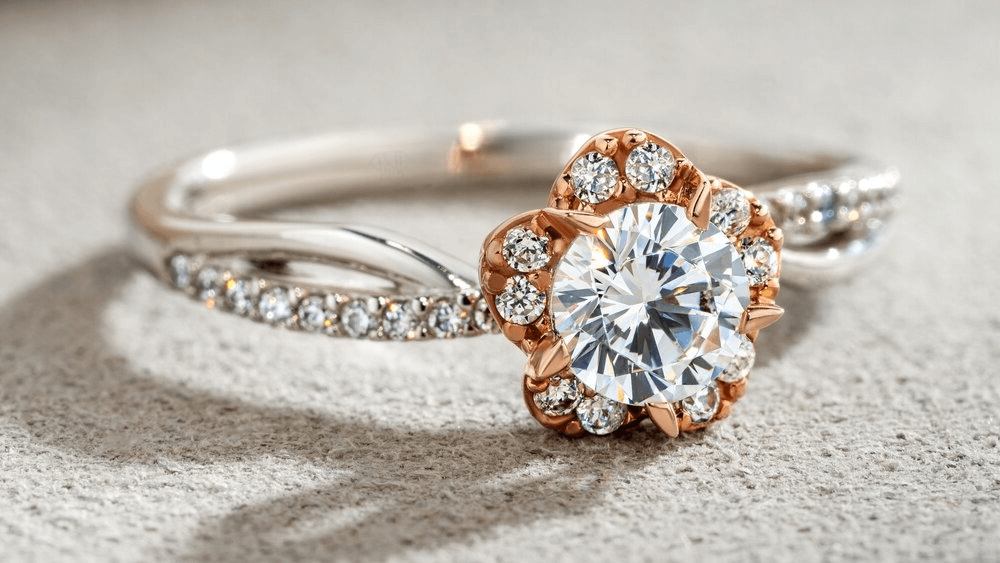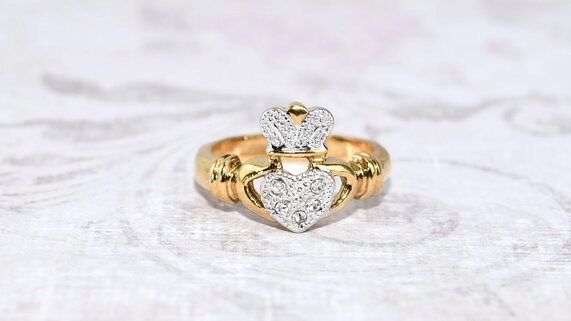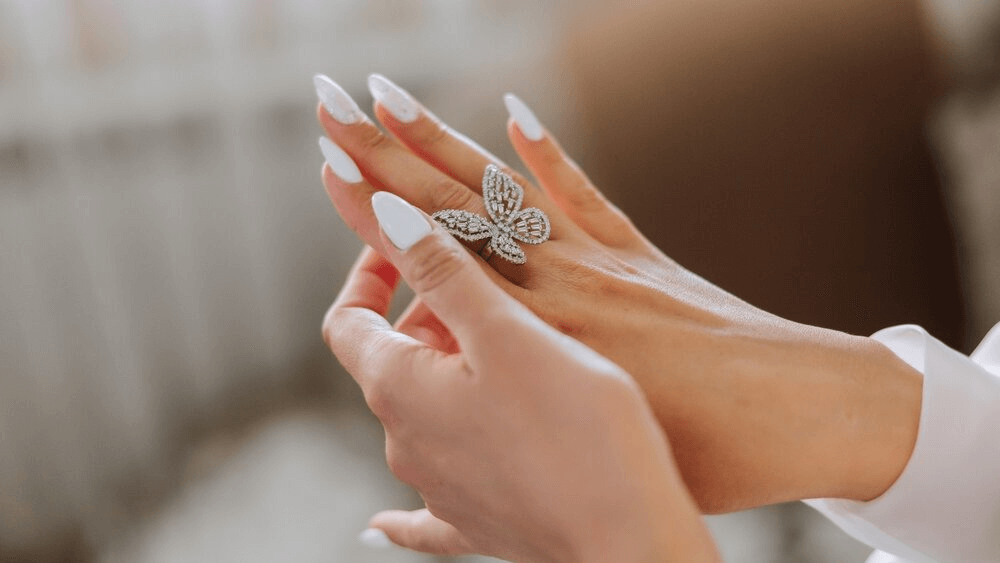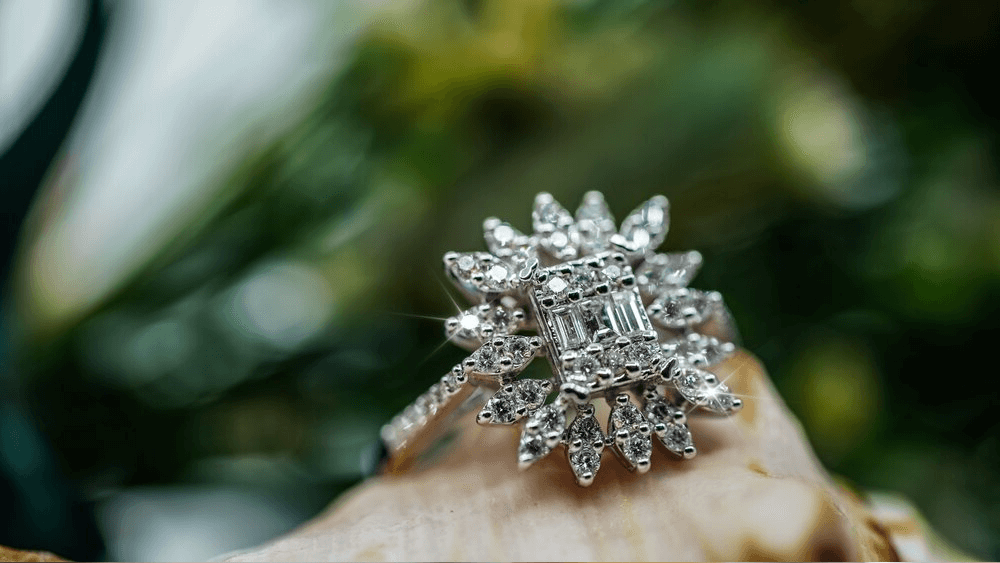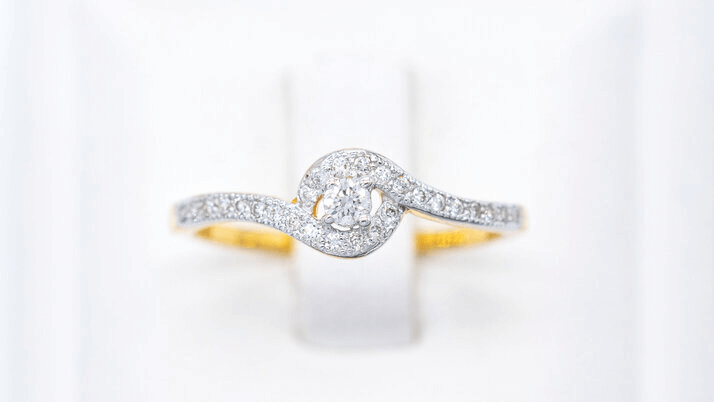Heart-Shaped Diamonds: Unveil the Allure of Romance Today!

By Gary A.

Edited by Olivia H.
Published Aug 13, 2024
Edited on Dec 17, 2024
Unlock the ultimate symbol of love and commitment with heart-shaped diamond engagement rings—where timeless romance meets modern elegance.

Navigate this guide:
- 8 Quick Tips for Getting Your Heart Shaped Engagement Ring Right
- Introduction: The Heart of the Matter
- Anatomy of a Heart-Shaped Diamond
- Mastering the Settings: Framing Love Perfectly
- The Celebrity Sparkle: Heart Diamonds in the Limelight
- Weighing Your Options: Benefits and Considerations
- Our Expert Take
- 7 Frequently Asked Questions about Heart-Shaped Engagement Rings
Before we dive deeper into the specifics, here are some practical tips to help guide your decision-making process:
8 Quick Tips for Getting Your Heart Shaped Engagement Ring Right
Tip 1. Pay Attention to Symmetry:
- A heart-shaped diamond should be perfectly symmetrical, meaning that each half of the heart should mirror the other. Any deviation could affect the overall appearance and value of the diamond.
Tip 2. Find the Right Proportions, Length to Width Ratio:
- The ideal length-to-width ratio for a heart-shaped diamond is between 0.9 and 1.1. This provides a well-balanced and pleasing appearance. A ratio outside this range may make the diamond appear too narrow or too wide.
Tip 3. Prong Setting That is Ideal – Opt for a Secure Setting:
- A prong setting is generally recommended for heart-shaped diamonds, as it securely holds the diamond and reduces the risk of damage to the pointed tip. A five-prong setting is typically ideal: four to secure the body and one to protect the tip.
Tip 4. Consider the Cut Quality:
- Since heart-shaped diamonds are a fancy cut, there isn’t a standardized grading system for their cut quality. Therefore, examine the diamond closely or opt for a reputable jeweler to ensure the cut is of high quality, which impacts the diamond’s brilliance and sparkle.
Tip 5. Inspect the Cleft and Point:
- The cleft (the indentation at the top of the heart) should be sharp and distinct, and the point at the bottom should be well defined. A poorly defined cleft or point can make the heart shape less discernible.
Tip 6. Choose Higher Color and Clarity Grades:
- Due to their shape, heart-shaped diamonds can show color and inclusions more readily, especially towards the tips. Opt for higher color and clarity grades to ensure the diamond appears bright and clear.
Tip 7. Always Check the Diamond Certificate:
- Before purchasing, review the diamond’s certification. It provides detailed information about the diamond’s cut, color, clarity, carat weight, and other important attributes. Buy from reputable sellers who provide certification from recognized gemological laboratories.
Bonus Tip: Mind the Size:
- Heart-shaped diamonds tend to appear larger due to their elongated shape. However, be mindful of the actual carat weight and dimensions, and choose a diamond that aligns with your preferences and budget.
Now that you’ve got these practical tips, use Jeweler AI below to find the perfect engagement ring that suits your style and budget:
Introduction: The Heart of the Matter
Whether your beloved makes your heart stop or your heart pound, drop to the floor or ascend into the clouds, there’s no getting around the fact that at the heart of it all is… well… the heart. There’s a reason every Valentine’s Day is scattered with those curvy little symbols, why every box of chocolates features one lonely caramel at the bottom, and why we are all masters of doodling There are little characters across our post-its and crossword puzzles. We just all love to love.
Why, in that case, is the ultimate symbol of engagements around diamonds? True, it’s beautiful and brilliant and timelessly classic, but does it really scream romance as loudly as it could? There’s only one shape up for the job: the heart. Yes, it may be taking things literally, but you’ve got to take things pretty literally to make the ultimate commitment close down.
So, how do you find the perfect heart-shaped engagement ring? Stick around and you’ll find out.
Origins and Romantic Significance
Chances are, you already know that the heart symbol is not an anatomically correct representation of the heart. Nonetheless, it is the ultimate symbol of all that goes on inside our chests, from those little flutters to those sudden stops.
Interestingly, the heart symbol is very old. Historians have traced it back to the 13th century when Thibaut de Blaison created the manuscript Roman de la poire. In it, a young man presents his heart – represented in a very familiar common naive shape – to his love. Ever since then, artists and amateur doodlers have all converged on the same basic representation of that most vital organ.
Despite the fact that, for a long time, the symbol of the heart was presented upside down, it eventually settled on the form that is universally recognised to this day.
Anatomy of a Heart-Shaped Diamond
In the heart-shaped diamond, the shape of the heart is achieved in the upper portion of the stone. The girdle, pavilion, and table all feature that distinctive heart shape, while the diamond’s pavilion (its lower portion) follows a cone-like shape characteristic of the modified brilliants.
Understanding the Unique Cut
Despite the fact that the heart-shaped diamond does qualify as a modified brilliant, don’t expect it to sparkle anywhere near as much as the original brilliant cut: the round. Not only does the shape’s tapered point restrict light performance, but its asymmetrical silhouette also prevents as much light from reaching the centre of the stone as otherwise could.
Selecting the Ideal Proportions
Since the shape has some restrictions in terms of sparkle, you’ll want to make sure that you pick the best possible proportions. It’s very obvious to us when a heart is off balance, and, unfortunately, it’s very easy for a heart diamond to be cut incorrectly.
You can read our full guide to choosing a well-proportioned heart shaped diamond here.
Mastering the Settings: Framing Love Perfectly
A hot diamond does all the talking on your behalf, so where do you even start when it comes to choosing the right setting?
Popular Settings for Heart Diamonds
On the one hand, you could play things safe. Since the heart makes a big statement, avoid overdoing it with accents and embellishments. A simple solitaire heart-shaped engagement ring can be all you need to make this cut sing and make your partner’s knees weak.
Then again, if you’re choosing the heart diamond because you know your partner is bold, daring, and out there, why stop adding a solitaire? A Halo will emphasise the heart’s distinctive outline, while embellishment along the band will bring all the more fire and brilliance to the ring… and a big impact.
Alternatively, consider integrating the heart-shaped cut as an embellishment, rather than the centre focus. Let’s say you choose a simple emerald cut diamond for the ring’s centre. On either side of that emerald cut, you could place a heart-shaped accent stone to put onlookers in no doubt about your feelings for your fiancé.
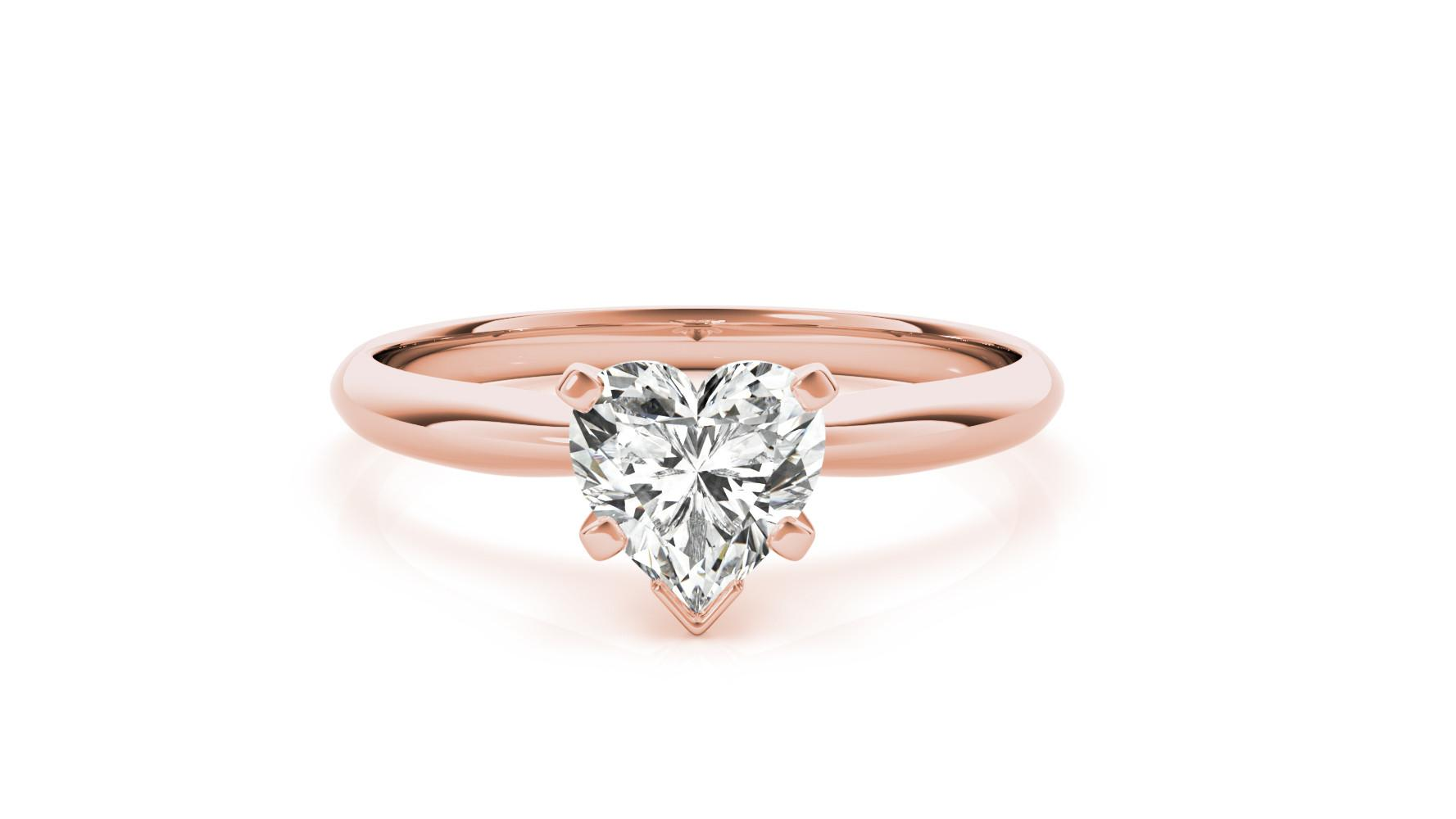
The Celebrity Sparkle: Heart Diamonds in the Limelight
As with most things in life, we like to take a page out of the celebrities’ books – and where else are you going to find better examples of flamboyant, dramatic heart-shaped engagement rings then Hollywood?
Iconic Heart-Shaped Rings and Their Stories
The heart is not a common symbol in fine jewelry – and, in particular, engagement rings. The most obvious reason behind this niche popularity is the fact that the heart is a very literal symbol. While the marquise diamond shape, for instance, is an abstract depiction of the lips of King Louis XV’s mistress, the heart shape, well, wears its heart on its sleeve.
Of course, we have some perfect examples of heart-shaped jewelry to draw inspiration from. In Titanic, the Heart Of The Ocean – yes, that necklace – comprises a stunning sapphire cut into the shape of a heart and surrounded by a row of melee diamonds. True, the back story drains its romantic power somewhat, but it’s still a great example of how timelessly classic heart-shaped jewelry can be.
More recently, we have an example from Lady Gaga herself. In 2015, Tyler Kinney went down on one knee for Lady Gaga with an estimated 8-carat heart shaped diamond. As a result, Internet searches for heart engagement rings popped off Throughout the second half of the 2010s.
Gwen Stefani also sent jaws dropping after showcasing a heart shaped diamond ring post-nuptials to Gavin Rossdale.
Weighing Your Options: Benefits and Considerations
You’ve made your decision? Consider thinking again…
Why Choose a Heart-Shaped Ring?
In short, because it’s romantic, different, and, despite the age of the heart symbol, creates a very modern look for an engagement ring.
Things to Keep in Mind
Here’s where things can get a little tricky. The heart is the obvious choice for any hopeless romantic, but will it remain as beautiful, timeless, and beguiling as it is on the day of the proposal? A very versatile shape like a round, square (cushion), or rectangle is less obtrusive; it’s not a novelty or a nod to any particular style.
In other words, what we’re trying to say is this: a heart-shaped diamond can age itself quite quickly. While, at first, it may seem like a fun, light-hearted way to seal your engagement, ask yourself whether or not you think your partner will love it just as much 50 years from now. Of course, it will have sentimental value on its side; the more special a piece of jewelry is, the less likely we are to suddenly grow tired of it. But heart engagement rings go in and out of style, in and out of favour, and in and out of interesting.
If you’re on the fence, consider bringing your partner in on the decision. A lot of people feel quite strongly one way or the other about heart shape diamonds, so it shouldn’t take long to get your answer.
Our Expert Take
Not to get too poetical, but the heart is a tricky thing. When it comes to diamonds, a heart can be the best or worst decision you make fear engagement ring. It’s bright, attention grabbing, unique, and fun, but it’s certainly not for everyone.
If you can’t get your mind off the idea of presenting a heart-shaped engagement ring, consider adding a heart diamond as an embellishment before you go the full hog and make your centre stone a heart. Then again, don’t let us stand in the way of true romance… if you know she’s going to love it, do it.
7 Frequently Asked Questions about Heart-Shaped Engagement Rings
- Q: Are heart-shaped engagement rings more expensive than other shapes?
- A: The cost can vary widely depending on the diamond’s size, quality, and the ring’s design. Heart-shaped diamonds may require more precision in cutting, which can sometimes lead to a slightly higher price.
- Q: Is a heart-shaped engagement ring a good choice for a traditional bride?
- A: Absolutely! While heart-shaped rings are unique, they can still appeal to traditional brides who appreciate romantic symbolism and classic elegance, especially when set in timeless designs.
- Q: How can I ensure the quality of a heart-shaped diamond?
- A: Look for diamonds certified by reputable gemological laboratories, and pay close attention to the diamond’s symmetry, as it’s crucial for a heart shape. Opt for higher color and clarity grades to ensure brilliance and clarity.
- Q: What settings are best for heart-shaped engagement rings?
- A: Prong settings, especially those with five prongs (four around the body and one securing the point), are ideal as they offer security and highlight the diamond’s shape. Halo settings can also enhance the diamond’s size and sparkle.
- Q: Can heart-shaped diamonds appear larger than other shapes?
- A: Yes, due to their elongated and wide shape, heart-shaped diamonds can appear larger than other diamond shapes of the same carat weight, offering a visually impressive size.
- Q: Are heart-shaped diamonds suitable for daily wear?
- A: Yes, with the right setting that protects the diamond’s point and edges, heart-shaped diamonds are suitable for daily wear. Opting for a setting with a protective bezel or V-prong at the point can help ensure durability.
- Q: How do I care for my heart-shaped engagement ring?
- A: Regular cleaning with mild soap and water, annual check-ups with a jeweler to ensure the setting’s integrity, and avoiding harsh chemicals or physical activities that could damage the ring will keep it in excellent condition.
Discover Love’s True Shape with Jeweler AI – Your Heart-Shaped Ring Awaits!
FOLLOW-UP GUIDE SERIES





